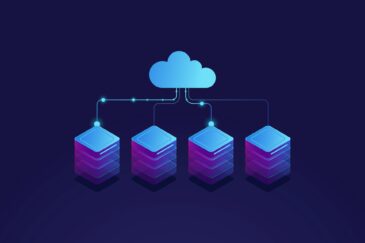How to Ensure Data Quality in Data Migration Projects?

- August 8, 2024
- Mohammed Nadeem Uddin
- 0
Published On August 8, 2024
Before starting a data migration project, it is crucial to understand the scope and objectives, including what data will be migrated, the business goals, and expected outcomes. Assessing the complexity and volume of data helps in planning and execution. Evaluating the quality and compatibility of the source and target systems, identifying data issues, and planning necessary transformations are vital. Assessing the technical capabilities of the target system ensures it can handle the data without performance issues. Considering potential downtime and its impact on operations is essential for minimizing disruptions. Involving stakeholders, securing their buy-in, and planning for user training and support are also critical to a smooth transition and faster adoption of the new system.
Best Practices to Ensure Data Quality During Data Migration
Planning and Assessment
Planning and assessment are the first steps in a data migration project. Define the project’s objectives, scope, and requirements, and thoroughly assess the source data to identify quality issues like duplicates or missing values. This sets the foundation for the migration and ensures all stakeholders understand the goals and data quality.
Data Profiling
Data profiling involves analyzing the source data to understand its structure, content, and quality. Specialized tools are used to assess attributes, detect anomalies, and identify patterns. Profiling helps uncover inconsistencies and inaccuracies, aiding in accurate data mapping and transformation.
Data Cleansing
Data cleansing corrects errors and inconsistencies to meet quality standards. This step involves removing duplicates, standardizing formats, correcting inaccuracies, and filling missing values. Automated tools handle large data volumes efficiently, ensuring clean data and maintaining integrity during migration.
Data Mapping and Transformation
Data mapping and transformation define how source data will be converted to fit the target system. Create and validate detailed mapping rules to preserve data’s meaning and context, ensuring compatibility and seamless integration with the target system.
Data Validation and Testing
Data validation and testing check data accuracy, consistency, and completeness post-migration. Perform test migrations to identify and address issues before the final migration, ensuring data reliability and functionality in the new system.
Data Reconciliation
Data reconciliation compares source and target data to ensure complete and accurate migration. Match records between systems and verify no data is lost or altered. Automated tools make reconciliation efficient and reliable, allowing for early discrepancy detection and correction.
Monitoring and Auditing
Monitoring and auditing oversee the migration process to detect and address issues. Maintain logs of migration activities for transparency and accountability. Effective monitoring helps in real-time problem detection, while auditing provides a historical record for compliance and review.
User Involvement and Training
User involvement and training ensure alignment with business needs and user preparedness for the new system. Engage stakeholders throughout the project to gather feedback and meet requirements. Provide comprehensive training to enhance user adoption and minimize disruptions.
Data Governance
Data governance establishes policies and procedures to maintain data quality and integrity during and after migration. Define data ownership, quality standards, and compliance requirements to ensure reliable, secure, and consistent data management.
Post-Migration Review
The post-migration review evaluates the migration’s success and identifies areas for improvement. It assesses the migrated data’s quality, reviews the process, and gathers user feedback. This helps refine strategies and practices for future projects, ensuring continuous improvement.
The Role of Data Migration Services and Data Migration Tools
Data migration services assist organizations in transferring data from one system to another, whether between databases, storage systems, or applications. These services include comprehensive planning, assessment, and execution phases to ensure data integrity, security, and minimal downtime during migration. Service providers leverage advanced tools and methodologies to handle ETL processes, ensuring data is accurately mapped, cleansed, and validated. Additionally, data migration services include real-time monitoring, error resolution, and post-migration support to address any issues promptly and ensure a smooth transition.
Data migration tools play a crucial role in ensuring migration projects’ efficiency, accuracy, and success by automating and streamlining the ETL processes. They minimize human error, enhance data accuracy, and significantly reduce migration time and effort with data profiling, cleansing, mapping, and validation functionalities. Data migration tools include pre-built connectors for various databases and applications, simplifying integration and compatibility. Additionally, they offer advanced features like real-time monitoring, error handling, and reporting to track migration progress and promptly address issues.
ConvertRite is a powerful Oracle data migration tool that facilitates the seamless data transition from legacy applications to Oracle Cloud, offering up to 40% cost savings. It simplifies the complex data migration process through automation, handling data mapping, transformation, and validation with minimal coding required. ConvertRite’s extensive mapping capabilities ensure accurate data conversion, supporting various formats and mappings. It also includes rich dashboards and configurable reconciliation reports to track the migration process and ensure data accuracy. Built on Oracle PaaS, ConvertRite is HIPAA-compliant and compatible with on-premise platforms like PeopleSoft, JD Edwards, and SAP. It is a versatile solution for enterprises migrating to Oracle Cloud without the usual implementation costs and business disruptions.

Services
Products
Company
Copyright © 2025 Rite Software Solutions & Services LLC. All rights reserved.



